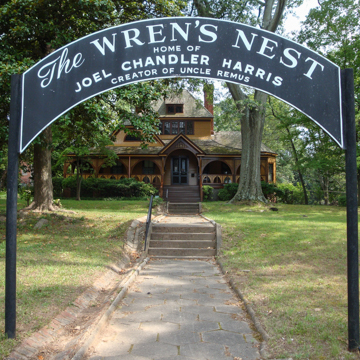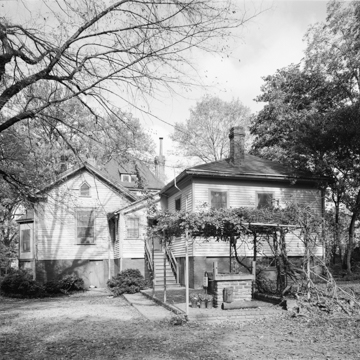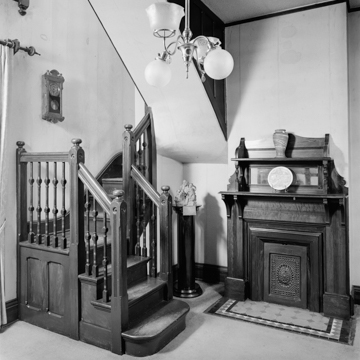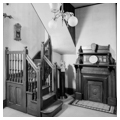You are here
Wren’s Nest
After several remodelings, an unsophisticated domicile in Atlanta’s West End became one of the city’s finest Queen Anne houses. The house is also famous for its most prominent occupant, author and storyteller Joel Chandler Harris, who named his residence Wren’s Nest after observing the small birds nesting in his mail box. Through a series of enlargements and stylish updatings, Harris shaped the house as we know it today. He was also responsible for transforming it into a destination for local children, who gathered on its welcoming ornamental porch and in its shady yard to listen to stories and folk tales. These magical “songs of the south” (as they were later called) still inhabit the place and give it its soul. Harris lived here from 1881 until his death in 1908. His wife preserved his bedroom as it was when he died, and it remains virtually untouched today. Five years later, the Uncle Remus Memorial Association (later renamed the Joel Chandler Harris Association), bought the house for its headquarters and has occupied it ever since.
Like Mark Twain, his contemporary and kindred spirit, Joel Chandler Harris was a popular storyteller and writer in the late nineteenth century. He, too, relied on dialect and a commonplace spirit of the everyman to evoke the spirit of ordinary life in the nineteenth century. When the American Folklore Society was founded in 1888, Twain and Harris were charter members. Like Twain’s Huck Finn and Jim, Harris’s characters have become immortal, especially Uncle Remus and the raconteur of the Br’er Fox stories, who were inspired by Southern and black folklore.
Harris was born in 1845 in Eatonton, Georgia. As a young man in the years before the Civil War, he spent time at the nearby Turnwold Plantation. There, among the plantations slaves, he was exposed to stories, songs, and folk tales recounted by black plantation workers and translated by Harris into the persona of Uncle Remus. Harris listened with an acute ear for dialect and meticulously recorded the aphorisms, inflections, and phraseology of the slave population, with the result that folk tales from Africa and plantation life, stories and vignettes of daily life, which had previously been passed down only by oral tradition, were documented through the immortal character of Uncle Remus. Harris eventually accumulated some 185 of these “old plantation” tales and published them regularly beginning in the 1880s. He also worked as a newspaper typesetter, writer, and then associate editor, working eventually for the Atlanta Constitution, for which he wrote thousands of articles.
When the Wren’s Nest opened as a house museum in 1913, it was supported by Andrew Carnegie, President Theodore Roosevelt, and the children of Atlanta public schools, who collected nickels and pennies to help save the house. The east parlor was converted into the Uncle Remus Memorial Carnegie Library, where it was maintained until 1930. When the weight of increasing numbers of books threatened the floor, the collection was moved. From 1949 to 1950, Atlanta architects Stevens and Wilkinson designed a neighborhood public library building for West End, and it has been known since not as the West End branch, but the Uncle Remus Library. In 1949 Atlanta sculptor Julian Hoke Harris (no relation) installed terra-cotta wall sculptures of Harris’s famed critters on the entry wall of the library and ten years later carved them in limestone for a site at the regional shopping mall, Lenox Square; the stone critters were later moved to the Morgan County public library in Madison, headquarters of the Uncle Remus Regional Library System.
Writing Credits
If SAH Archipedia has been useful to you, please consider supporting it.
SAH Archipedia tells the story of the United States through its buildings, landscapes, and cities. This freely available resource empowers the public with authoritative knowledge that deepens their understanding and appreciation of the built environment. But the Society of Architectural Historians, which created SAH Archipedia with University of Virginia Press, needs your support to maintain the high-caliber research, writing, photography, cartography, editing, design, and programming that make SAH Archipedia a trusted online resource available to all who value the history of place, heritage tourism, and learning.
















